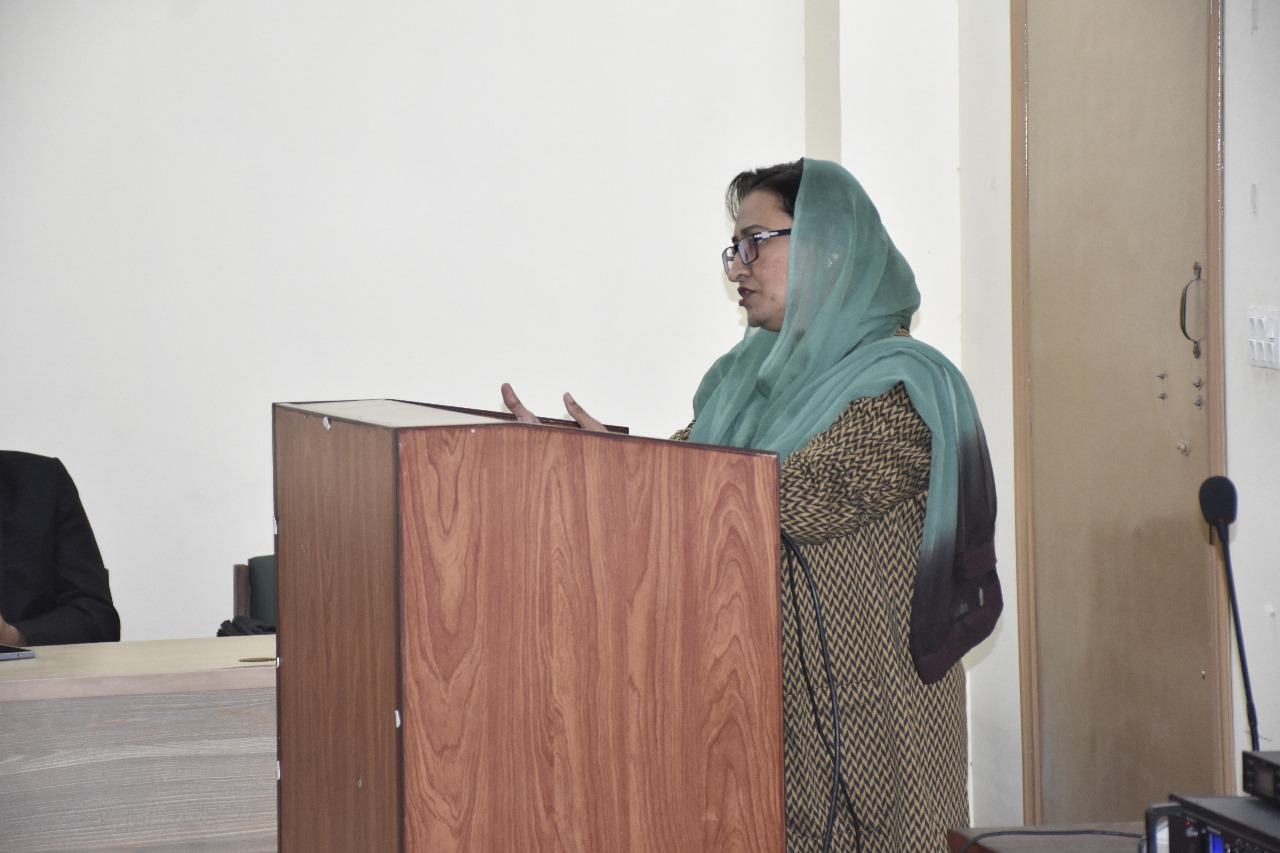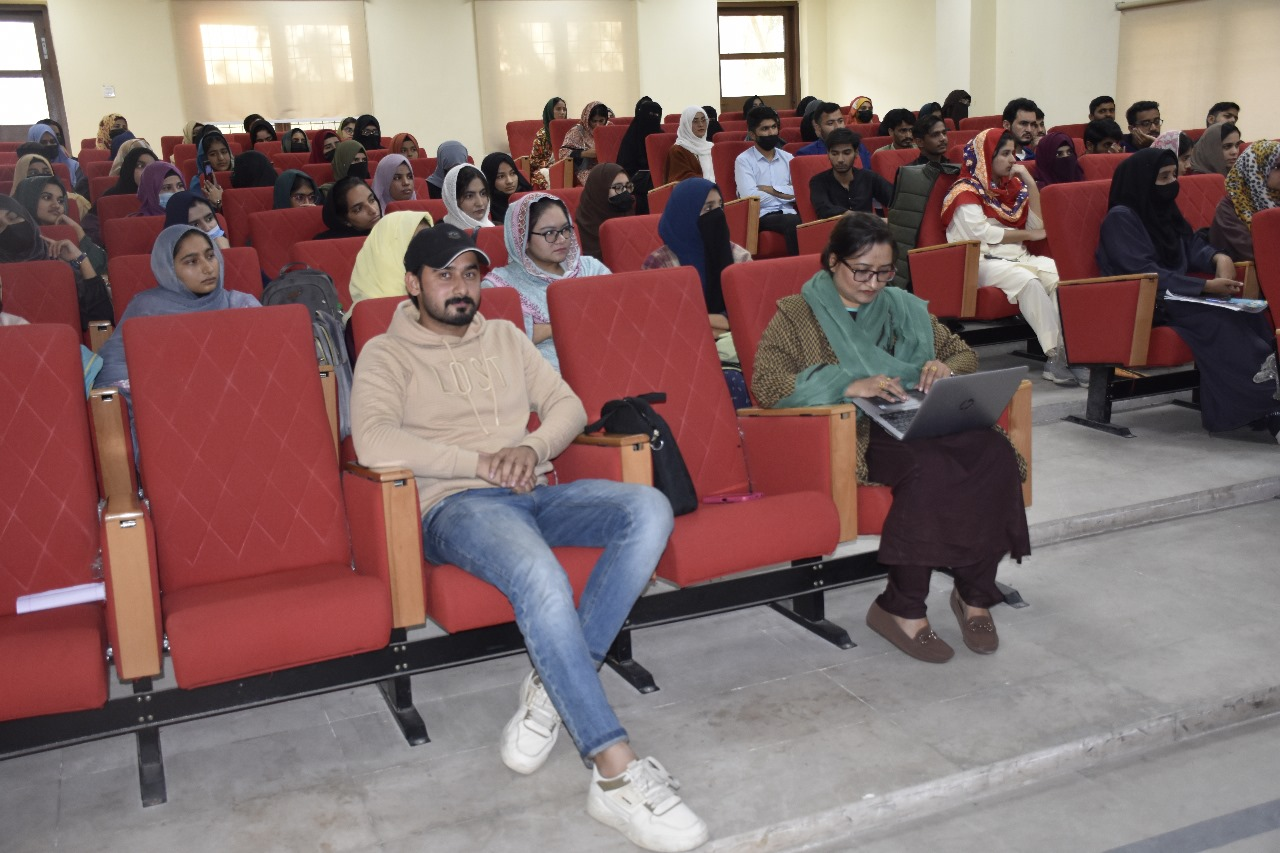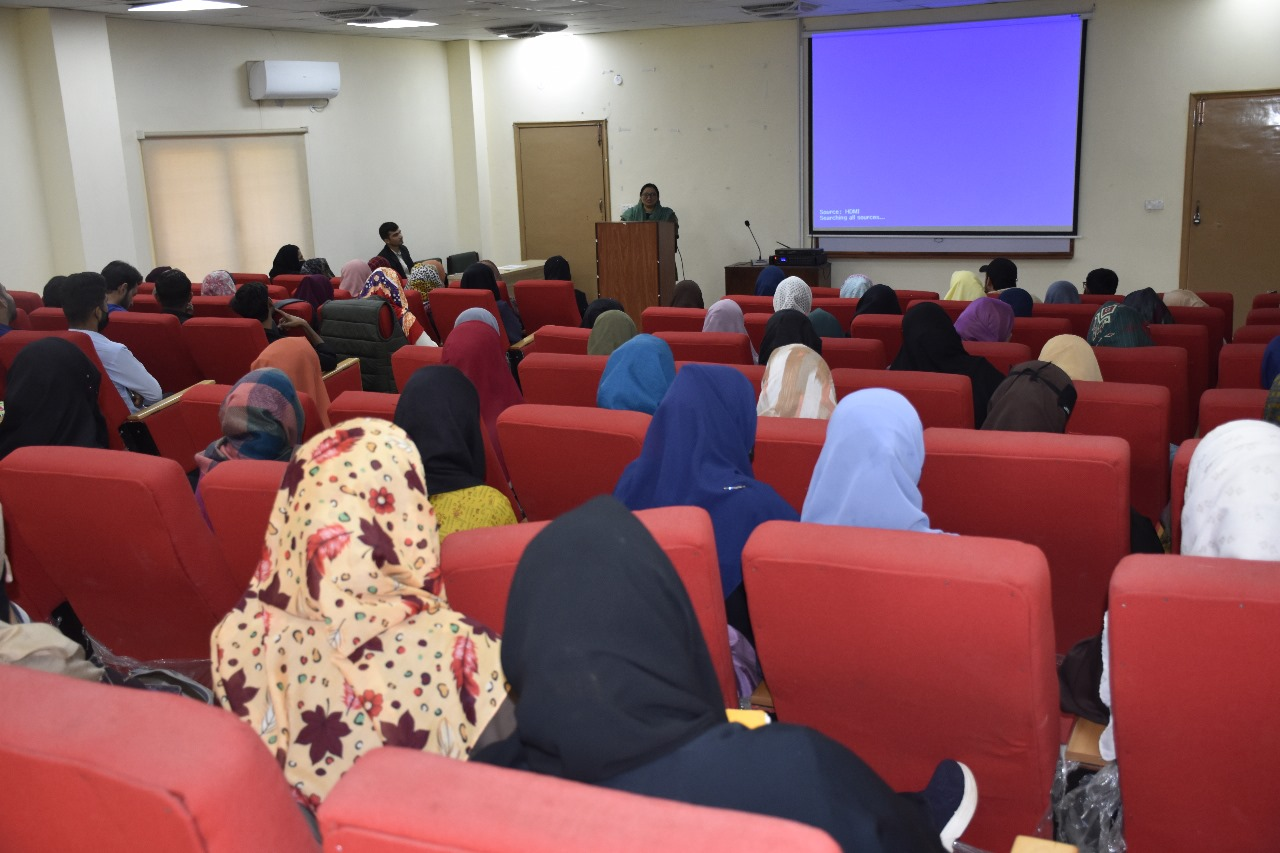Title:
Green Synthesis of Medicinal Plants Mediated Nanoparticles and Their Applications
Date:
April 10th, 2025 (UTC +5)
Organizer:
Department of Botany, Division of Science and Technology, University of Education, Lahore, Pakistan
Symposium Chair:
Dr. Ghulam Yaseen
Personal Bio:
Dr. Ghulam Yaseen is a Young distinguished researcher of the Botany, currently working as Assistant Professor in the Department of Botany, Division of Science & Technology, University of Education, Lahore, Pakistan. Meanwhile He is working as guest editor, member of editorial board of the various Journals, and completed various reviews of the assigned by the various journals. His research integrates methodological approaches from ethnopharmacology, natural product research, public health research, and anthropology. His group's research is based on a transdisciplinary perspective integrating approaches from the biomedical and social sciences with an overall aim of tackling the fast-changing global health needs. His research interest includes the floristic inventory, Ethnopharmacology, phytochemistry and biological activity of medicinal and aromatic plants. Pharmacological studies include anti -malarial, anti-diabetic, antiviral, anxiolytic activity, antimicrobial and antioxidants activities etc. In addition, the lab has applied metabolomics to species authentication and active identification of bioactive compounds. He has published more than 50 research papers (Impact Factor: >160); 10 Book Chapters, organized 10 conferences / seminars / symposiums; participated in >30 national and international conferences / seminars / symposiums. His citations exceeded >2300 with H-index (20) and i10 index (35). More than 25 undergraduates, masters and doctoral students have graduated under my supervision since 2017. He has worked as Assistant Professor (IPFP) in the Department of Botany, PMAS Arid Agriculture University Rawalpindi-Pakistan. He has worked visiting faculty member in Department of Plant Sciences, Quaid -i- Azam University, Islamabad. He has thought various courses at BS and M.Sc. level. He also worked as Research Associate in an International project on Digitization of Flora of Pakistan with special reference to Data mobilization and Georeferencing of Plant occurrence from Pakistan funded by GBIF. He serves in various journals as active reviewer and play important role in improvement of manuscripts.
Committee Members:
Dr. Abrar Hussain, University of Education, Pakistan, [email protected]
Dr. Zahra Noreen, University of Education, Pakistan, [email protected]
Dr. Anis Ali, University of Education, Pakistan, [email protected]
Call for Papers
Background:
The medicinal plants are important for the health care of most of the people in the
world. Traditional herbal medicines are getting significant attention in global health
discussions. Out of the total 422,000 flowering plant reported from the world, more than
50,000 are used for medicinal purposes. About 60% of the world population and 80% of the
population of developing countries rely on traditional medicine. More than 4.5 billion
people in the developing world rely on medicinal plants as components of their
healthcare. Medicinal plants are globally valuable sources of new drugs. There are over
1300 medicinal plants used in Europe, of which 90 % are harvested from wild resources;
in the United States, about 118 of the top 150 prescription drugs are based on natural
sources. Furthermore, up to 80 % of people in developing countries are totally dependent
on herbal drugs for their primary healthcare, and over 25 % of prescribed medicines in
developed countries are derived from wild plant species. Pakistan has a unique
biodiversity, having nine major ecological zones. Due to its unique climate, the country
is very rich in medicinal and endemic plants distributed in its large area. According to
an estimate, almost 6,000 wild plant species are present with nearly 600 species being
used for medicinal purposes.
Several parts of the herbal plant such as leaf, stem, fruit, seed, bark, and roots are
used to acquire many phytochemicals. Medicinal plants are also gaining popularity among
the western population because they have minor or no side effects if administered
properly. Besides medicinal use, plants are increasingly used in cosmetics and
nutraceutics. Herbal medicines have been proved to be highly effective to treat a wide
range of diseases, including gastrointestinal disorders.
Nanotechnology is described as a comprehension and manipulation of materials within the
range of 1100 nm, exploiting phenomena to facilitate innovative uses. It has garnered
significant attention due to the unique properties at the nanoscale, enabling engineers
and scientists to manipulate matter in novel ways. Nanotechnology has been adopted in
various sectors, including health, food and agriculture, environment, electronic, and
textile. Among the most studied aspects of nanotechnology is the preparation and
manipulation of nanoparticles, considered as the primary underlying element.
Nanoparticles and nanostructured materials are gaining increasing attention for
integration into multidisciplinary science. Their super tiny size provides a large
surface area to volume ratio, resulting in unique physical and chemical properties.
These properties contribute to excellent antibacterial and catalytic performance, as
well as magnetic and electrical properties, leading to the development of functional
materials in various fields such as semiconductors, electronics, sensors, antibacterial
agents, and more.
Before the development of the green synthesis method, the nanoparticles were
conventionally synthesized through some methods and techniques, including alcohothermal,
hydrothermal, sol-gel, precursor sublimation technique, plasma-chemical, gamma
radiation, electrochemical, microwaveassisted hydrothermal, sonochemical, magnetron
sputtering, reduction, and reverse microemulsion combined with reduction method. Due to
its simplicity and ease, the reduction-precipitation method is the most favorable among
the conventional synthesis methods. The plant extract is the most favorable of
all-natural sources to synthesize nanoparticles because of its natural abundance.
Additionally, it is easy to find and prepare, safe, consume low energy, and in some
cases, it can also maintain the growth and stability of formed nanoparticles. The
preparation of plant extract is quite simple. The advantages of plant extract-mediated
nanoparticle synthesis are: i. simple procedure (ambient conditions), ii. zero
contamination because all from natural plant extract biocompatible byproduct, iii. free
toxicity from hazardous chemical solvents in synthesis, iv. The nature traits of
reducing and capping agents synchronize, v. environmental benign, vi. the potential to
produce nanoparticles on a large scale, vii. cost-effective, and viii. well, define size
and shape of nanoparticles may produce.
Topics:
The main topics of this symposium are listed below.
Nanoparticles and Medicinal Plants
- Nanoparticles
- Drug Discovery
- Medicinal Plant
- Natural Products
- Pharmaceutical Products
- Active Biocompounds
Meanwhile, submissions aligned with the overall conference theme are also welcome.
Environmental Science
- Atmospheric Environment
- Environmental Analysis and Methods
- Environmental Biology
- Environmental Catalysis
- Environmental Chemistry
- Environmental Climatology
- Environmental Microbiology
- Environmental Pollution
- Environmental Toxicology
- Environmental Governance and Management
- Maritime Environment
- Nano Materials and Nanotechnology
- Water Environment
Geoscience
- Engineering Geology
- Geochemistry
- Geographic Information System
- Geographical Environment
- Geo-microbiology
- Geophysics
- Natural Disasters and Engineering
- Natural Resource Management
- Repair Science
- Soil Science
Ecology
- Atmospheric Science
- Biome
- Climate Change
- Ecosystem
- Geography
- Geologic Record
- Geology
- Glaciology
- Hydrology
- Marine Pollution and Large Scale Solutions
- Meteorology
- Oceanography
- Physical Geography
- Plate Tectonics
- Volcanology
Bioscience and Bioengineering
- Agriculture, Aquaculture, Animal Husbandry, and Forestry
- Bio-Resources Utilisation
- Biodiversity
- Bioenergy and Biofuels
- Biomedicine, Biosystem, and Biochemistry
- Bioprospecting and Industrial Biology
- Conservation Biology
- Dynamic Stabilisation Law
- Electrical/Bio-Synthetics
- Food Biotechnology
- Food Nutrition and Health
- Food Process Design and Engineering
- Food Safety and Quality Control
- Land-Use Pattern
- Mechanical/Biosensor
- Omics, Bioinformatics, and Computational Biology
- Sustainable Development
- Techno-Biology and Bioengineering
Submission:
Prospective authors are kindly invited to submit full papers that include title, abstract, introduction, tables, figures, conclusion and references. It is unnecessary to submit an abstract in advance. Please submit your papers in English.
Each paper should be no less than 4 pages. One regular registration can cover a paper of 6 pages, and additional pages will be charged. Please format your paper well according to the conference template before submission. Paper Template Download
Please prepare your paper in both .doc/.docx and .pdf format and submit your full paper by email with both formats attached directly to [email protected]
Important Dates:
| Process | Date & Time |
|---|---|
| Submission Deadline | April 3, 2025 |
| Symposium Date | April 10, 2025 |
| Notification of Acceptance | 7-20 workdays |
Publication:
Accepted papers of the symposium will be published in Theoretical and Natural Science (TNS) (Print ISSN 2753-8818), and will be submitted to Conference Proceedings Citation Index (CPCI), Crossref, CNKI, Portico, Engineering Village (Inspec), Google Scholar, and other databases for indexing. The situation may be affected by factors among databases like processing time, workflow, policy, etc.
Publication info
Title: Theoretical and Natural Science (TNS)
Press: EWA Publishing, United Kingdom
ISSN: 2753-8818, 2753-8826 (electronic)
This symposium is organized by ICEGEE 2025 and it will independently proceed the submission and publication process.
* The papers will be exported to production and publication on a regular basis. Early-registered papers are expected to be published online earlier.
Highlights
A one-day workshop entitled “Green Synthesis of Medicinal Plants mediated nanoparticles and their applications in Herbal Drug Development” Was held on Thursday, April 10, 2025 at the University of Education of Education under the supervision of Dr. Ghulam Yaseen, Assistant Professor of Botany, Division of Science and Technology. The present workshop covered the most recent advancements in the field of green synthesis of nanoparticles and their evaluation. Participants got depth Knowledge on the state of the art in field of Plant mediated nanoparticles and their applications against cancer and the research carried out and the latest results. The present workshop focused on the recent advances, difficulties and breakthroughs as well as emerging and future trends in the green synthesis of nanoparticles from medicinal plants and their application in the drug discovery development. The event was graced by the participants from the universities to provide the opportunity of discussing new cooperation on Bio-nanofabrication, Nanostructured Materials, Nano-assemblies, Bio-inspired nanomaterials, Bio-nano measurement and microscopy, Nanobioanalysis in vitro, Nanotoxicology, Nanotechnology safety and Novel Drug discovery development. Furthermore, it was explored the innovative convergence of plant-based nanotechnology and medicine. This report summarizes the key takeaways from the workshop, highlighting the exciting possibilities and advancements in this field.
- Plant-based nanoparticle synthesis: The workshop discussed important medicinal plant species having medicinal potential and capable of synthesizing nanoparticles, such as gold, silver, and zinc oxide. These nanoparticles exhibit unique properties, making them suitable for biomedical applications.
- Therapeutic applications: The potential uses of plant-mediated nanoparticles in the treatment of various health issues such as wound healing, and antimicrobial therapy were explored. The workshop highlighted the ability of nanoparticles to target specific cells and tissues, enhancing treatment efficacy while reducing side effects.
- Mechanisms and characterization: The workshop delved into the mechanisms of nanoparticle synthesis, characterization, and functionalization. This understanding is crucial for optimizing nanoparticle properties and ensuring safety and efficacy.
- Regulatory frameworks and challenges: The workshop concluded the various regulatory issues of plant-mediated Nanomedicine, emphasizing the need for standardized protocols and guidelines to ensure safe and efficient translation to clinical applications.
The workshop was a success, with more than 100 participants from various backgrounds. The invited speaker delivered insightful presentation, and the Q&A sessions were engaged. The event provided a valuable opportunity for networking and knowledge sharing. The key takeaways will be useful for future reference and application.


